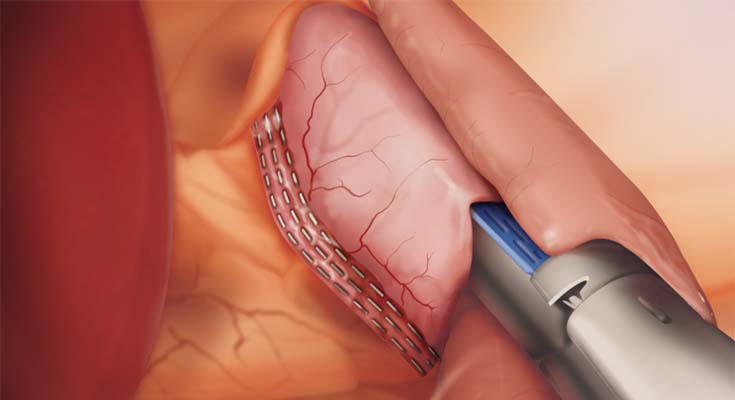


A laparoscopic sleeve gastrectomy is a nonreversible weight-loss procedure that reduces stomach size by 85 percent. It generates weight loss through reduced food intake.It is the restrictive part of the more extensive mixed restrictive and mal absorptive operation, gastric bypass and duodenal switch (GB/DS). It generates weight loss by restricting the amount of food that can be eaten without any bypass of the intestines or malabsorption. With this procedure, the surgeon removes approximately 85 percent of the stomach laparoscopically so that the stomach takes the shape of a tube or "sleeve."
During surgery, the stomach is divided vertically. The portion of the stomach that remains is shaped like a very slim banana, or sleeve, which measures from 50 – 150ml. There is no intestinal bypass, only stomach reduction. The lack of an intestinal bypass reduces the risk of potential long-term complications such as marginal ulcers, vitamin deficiencies and intestinal obstructions.
Similar to the traditional gastric bypass, after the laparoscopic sleeve gastrectomy you will feel satisfied with eating smaller portions, so you will be able to limit the amount of food you eat at one time. You will need to change your overall diet and eating habits, including drinking at least eight cups of water per day, chewing your food completely and consuming smaller portions.
Studies have shown that patients who undergo a laparoscopic sleeve gastrectomy lose 55 to 65 percent of their excess weight within one year. The surgery also may reduce cravings for sweets and improves overall quality of life. Also, because it is a minimally invasive surgery, it requires a shorter hospital stay and results in a faster recovery time. Better quality of life with less late complications as compared to gastric banding.
The procedure requires stapling of the stomach and therefore leakage and of other complications directly related to stapling may occur. Patients who are super obese usually require second stage operations in order to lose the rest of the excess weight if their BMI remains larger than 45, although two stages may ultimately be safer and more effective than one operation for super obese patients.